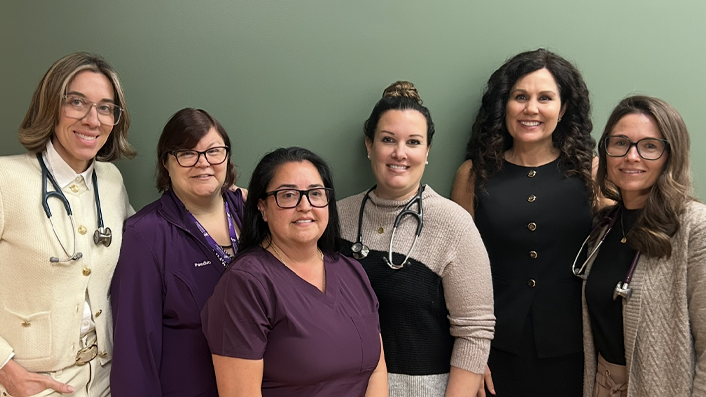Primary Care Nurse Practitioners as the Most Responsible Provider

During the 2024–2025-year, important foundational work was undertaken to address the needs of more than 65,000 people in London without a primary care provider. The Thames Valley Family Health Team (TVFHT) advanced an innovative Nurse Practitioner (NP)-led model of care by repositioning NPs as Most Responsible Providers (MRPs). This model allowed NPs to independently manage their own patient panels, provide comprehensive care, and lead team-based service delivery.
TVFHT partnered closely with physicians to support this transformation. The physician–NP relationship evolved from a traditional supervisory model to one characterized by collegiality, trust, and mutual knowledge sharing. Physicians increasingly recognized and supported NP-led care, fostering a culture of respect and interprofessional collaboration. This cultural shift created stronger, more resilient team dynamics and reinforced the sustainability of the model.
Between April 1, 2024, and March 31, 2025, the focus was primarily on preparatory work:
- Development of documentation, policies, and role clarity frameworks to guide the new model.
- Upskilling and training of primary care nurse practitioners and nurses to ensure readiness for expanded roles.
- Full employment of medical directives to empower TVFHT nurses in preventive care.
- Designing and testing a standardized intake process with an embedded complexity tool.
A slow intake process began between February 1 and April 1, 2025, as a soft launch to test workflows and refine the intake system. True project momentum started on April 1, 2025, when full implementation of NP-led attachments and panel development began.
Focus of future strategies and plans:
- Scaling patient attachments toward the target of 500–600 patients per full-time NP.
- Continuing to prioritize unattached patients to close equity gaps in access.
- Integration of NPs into after-hours clinic coverage to improve timely access.
- Sustaining advocacy to ensure funding models reflect patient complexity and interprofessional workload rather than panel size alone.
- Embedding NP-led workflows permanently into organizational operations for long-term sustainability.
Preliminary statistics and outcomes
- Early attachment of patients during the soft-launch phase.
- More balanced distribution of high-, moderate-, and low-complexity patients across NP panels, protecting provider well-being and supporting quality care.
- Increased team efficiency through task redistribution and enhanced role clarity.
Team collaboration has been a cornerstone of the project. The interprofessional team embraced shared accountability, and administrative staff played a vital role in streamlining intake, coordinating patient flow, and supporting communication. Additionally, the shift in physician–NP relationships toward collegial partnership strengthened trust, improved knowledge exchange, and reinforced the value of NP leadership in system transformation.
On February 1, 2025, the roster expansion project agreement between TVFHT and participating physicians of the Old South Family Health Organization (FHO) began.
While these new patients will be rostered to the Old South FHO physicians, TVFHT-funded nurse practitioners (NPs) will become the most responsible practitioners (MRP) for these new patients.
This project aimed to collaboratively roster new patients toward the target of 500–600 patients per full-time NP. In the initial phase, the plan is to attach 700 new patients by the end of March 2026. From there, this project will scale attachment for a total of 1,750 – 2,100 new patients attached.

